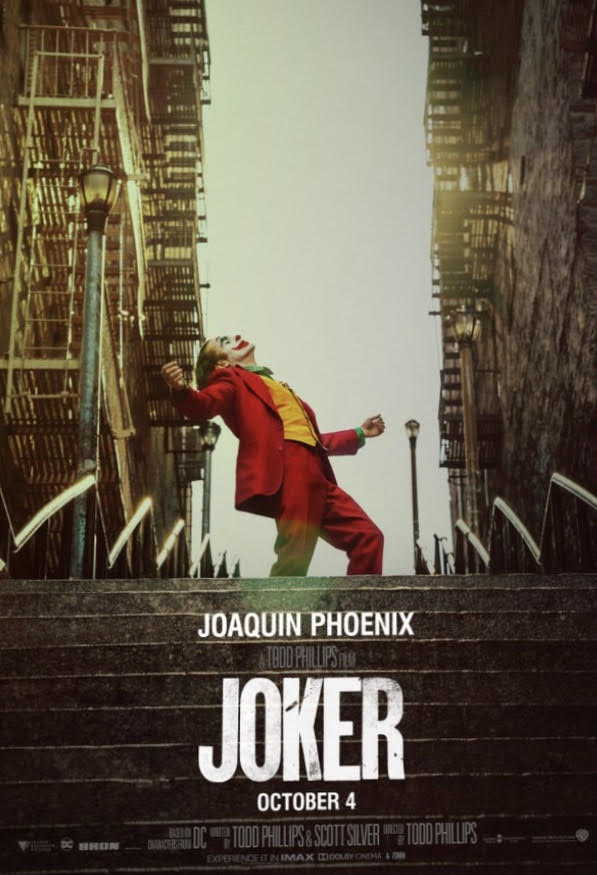No Joke: How “The Joker” became a deadly hit
Joaquin Phoenix stars as Arthur Fleck in “The Joker”, which was released on Oct. 4, 2019.
December 3, 2019
Hollywood’s latest comic book story, “The Joker”, has been marked on many people’s calendars for a while, but its dark themes may prevent this R-rated film from being a must-see. Critics called the film a masterpiece on Aug. 28, 2019, when it debuted at the Venice Film Festival. Lately, many have voiced concerns about the film’s depiction of violence at a time when mass shootings are extremely prevalent.
Arthur Fleck (Joaquin Phoenix) is a creep, a loser and a psycho, living in the early ’80s in Gotham with his delusional mother. He is an unsuccessful clown-to-hire aspiring to do stand-up comedy, but here’s the problem: he is not particularly funny. He has a Tourette’s-like mental condition and an uncontrollable laugh that comes out at often the worst possible moments. He takes seven medications and says to his social worker, Sharon Washington: “I just don’t want to feel so bad anymore.”
After he is harassed by some teenagers on the street, a co-worker gives him a gun and he decides to use it. He shoots for the first time when harassed by three men from Wall Street on the Subway. He shoots them fatally, runs home, then stops. In an empty bathroom on a desolate New York street, he starts to dance.
At that moment, we watch Arthur transform from a disturbed man with a chilling laugh into a happy killer. He embraces his identity as the Joker. He has found something that will help him more than his pills: his gun. The killing. The thought is so deranged, it makes one wonder what the movie is really trying to say—and whether it might encourage isolated people like Arthur Fleck to turn to violence.
Last week, in an extraordinary statement, movie studio Warner Bros. said that the film was not meant to endorse real-world violence.
“Warner Bros. believes that one of the functions of storytelling is to provoke difficult conversations around complex issues,” Warner Bros website said on Sept. 24, 2019. “It is not the intention of the film, the filmmakers or the studio to hold this character up as a hero.”
Unlike earlier versions of the “Joker,” there is no Batman to remind the Joker that what he is doing is wrong. This movie offers no clear answers. It draws confusing parallels to our current political atmosphere. Arthur’s supporters create a “kill-the-rich” movement that comes across as an over-the-top version of the “Occupy” movement from 2011. However, they also hold “Resist” signs, an unsubtle reference to the “Resist Trump” movement. Although the movie refuses to take sides, it is a reminder of our world, where there are red lines and blue lines and no Batman to tell us what’s right and what’s wrong.
This film stands out as an origin story. It explains how Batman’s story began and how the Joker came to be. However, the film asks for too much sympathy for the devil. Arthur inspires a legion of copycats who dress up like him and think like him. While he continues to gain power and attention, we still see him as the victim. He is painted as a hero and a villain. By being both, he loses the ability to make us feel anything at all.


